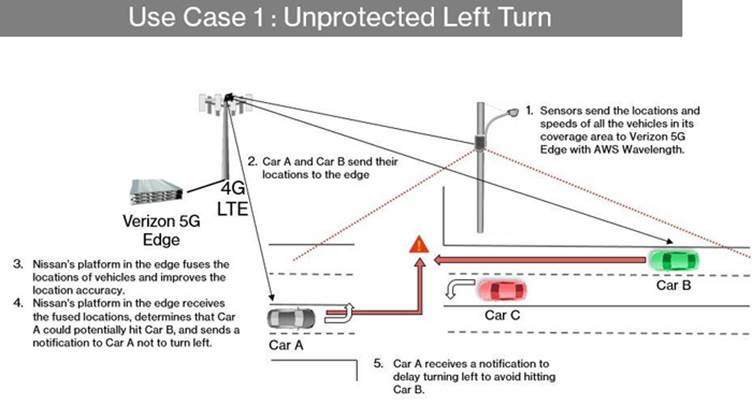Verizon and Nissan have completed a trial demonstrating how sensor data from vehicles and surrounding infrastructure can be processed at the edge of Verizon’s wireless network and communicated back to vehicles for urgent driver notifications in near real time.
The test successfully applied that process -- an example of cellular vehicle-to-everything communication (C-V2X) -- to scenarios in which drivers may find it difficult to see vulnerable pedestrians or oncoming traffic emerging from behind visual obstructions.
The Contra Costa Transportation Authority (CCTA) will initiate validation of the technology for its Automated Driving Systems Grant Program, which would see the use case tested in controlled public environments in Contra Costa County toward potential live deployment upon validation. The trials focused on testing a variety of vehicle-based and infrastructure-based sensor configurations to create a multi-viewpoint picture of potential safety hazards beyond vehicle and driver line-of-sight.
Using Verizon 5G Edge with AWS Wavelength, the sensor data from Nissan vehicles and infrastructure was processed at the edge of Verizon’s wireless network and communicated back via the cellular network to vehicles in near real time, prompting Nissan’s Intelligent Shared World platform to initiate driver notifications. This process helped notify drivers of detected pedestrians entering roadways from behind other cars or of oncoming vehicles obscured behind larger vehicles, as can occur during left turns with oncoming traffic.
The trial was conducted by Nissan’s Silicon Valley-based Research and Advanced Engineering team.
TJ Fox, SVP of Industrial IoT and Automotive, Verizon Business
This proof of concept shows that edge computing with Verizon’s cellular network can help take the resource-intensive compute burden off vehicles and public infrastructure and can communicate data outward to prompt potentially lifesaving safety alerts or autonomous driving features in the car, all essentially in real time.
Maarten Sierhuis, Ph.D., vice president, Nissan Technical Center North America
The successful development and pilot of this research technology reinforces our commitment to helping keep drivers and passengers safe and the future of mobility.






















